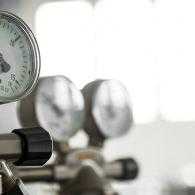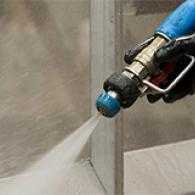Utilities power every single piece of equipment in food and beverage processing plants. Taking a closer look at electricity, steam, hot water and compressed air can uncover optimization opportunities, improve equipment reliability, and return spend to the operations budget.
Where to start? Establish the Baseline
Begin by collecting present and historical usage data to evaluate previous improvement project performance, establish the current baseline, and identify risks that could impact on achieving future strategies. The effort involved in collecting many data points can seem overwhelming, regardless of whether the project is localized or spread across multiple sites, but is crucial for calculating the size of the opportunity.
Improve on the Baseline by Eliminating Leaks in the Distribution Systems
Leaks occur in all utility distribution systems and are simply money “lost to the atmosphere”, “evaporating”, or “going down the drain”.
Proceeding to optimization projects without evaluating the distribution systems for leaks could result in poor performance against KPIs (key performance indicators) or projects being unsuccessful.
Where are the leaks?
Electricity - Compressed Gases
Compressed gases (air, CO2, nitrogen) are widely used throughout food and beverage manufacturing plants. While it is nearly impossible to operate with zero leaks (best practice is between 5-10%), many systems are losing 20-30% on average to leaks.
Thermal - Steam Leaks and Steam Trap Functionality
Steam traps serve an important purpose in maintaining heating efficiency, preventing steam losses and protecting equipment. Yet steam leaks often go ignored and systems are rarely checked after installation for operating effectiveness and efficiency.
Water
Water can be lost to leaks in the distribution system and wasted in operating processes. Holistic management of water consumption has the potential to reduce water and wastewater volumes by up to 30%.
As well as being financially costly and environmentally wasteful, leaks also present safety concerns and hygiene issues.
Diversey’s AirCheck, AquaCheck and SteamCheck solutions measure your systems for leaks, quantify the financial value of each leak, and produce a plan to eliminate them; ensuring that subsequent optimization projects have the best chance of achieving the potential benefits. Data is collated and visualized to identify trends such as seasonaility and production correlation and uncover potential "quick win" opportunities.
Optimization Tactics to Help Deliver the Long-Term Objectives
Some tactics are described below that can help reduce utility spend. Different tactics will deliver different outcomes and will depend on each specific situation and objectives. It is important to focus on those which will deliver measurable results against your optimization objectives.
Electricity: LED Lighting Retrofits
Lighting technologies have improved since the T8 lighting retrofits. LED technology is mature and can deliver an immediate payback to the electrical energy bill.
If a retrofit is too costly, evaluate the lighting requirements and compare to the demand requirements. For example, are motion sensors needed in areas where traffic is limited? Can employees be better trained to simply turn off lights when they are not needed which could deliver lighting savings by between 5 and 10%?
Thermal: Return Condensate to the Boiler
Instead of losing condensate water to the drain, return it to the boiler. As it is typically at a higher temperature than the makeup water and contains some of the chemistry, savings can be made in energy, water usage, waste-water treatment, and chemicals. According to the Department of Energy, recycling condensate will deliver a minimum 10% improvement.
Water: Turn off running water when it is not needed
Oftentimes, running water is seen in plants because “it’s the way it has always been”. An example is conveyor lubrication systems which continue to spray even when there is no product on the line. Ask more questions: does the water serve a purpose? Can this water serve secondary and tertiary purposes?
Behavior Changes - Educate your Employees
Once the optimization objectives have been agreed, share the information with employees and include ways in which they can help contribute to the projects. Visibility of the target, associating financial costs to activities and processes using utilities, and providing the right incentive for your teams will help embed a culture of awareness around responsible utility usage and maintain the momentum for each budget cycle.
Challenge employees to question why certain activities vary from person to person or equipment to equipment, visualize data such as water flow changes during cleaning by employees to identify areas in your processes that require standardization and provide a method to feedback ideas.
Continuous Improvement
Improving your utility budget is a continuum. Regularly checking for leaks, remote monitoring, and real-time feedback can ensure you identify new opportunities and build on previous successes without slipping back to old behaviors.
Holistic measurement and monitoring of utility usage will ensure that improvements in utility spend are not a one-off benefit but continue year after year.
References:
Steam Reference for Condensate Return Savings:
https://www.energy.gov/sites/prod/files/2014/05/f16/steam8_boiler.pdf








